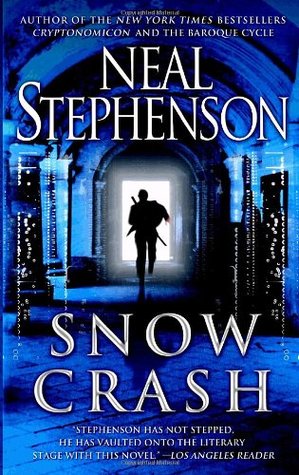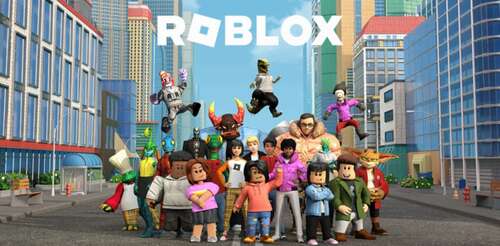It’s now two years since Facebook changed its name to Meta, ushering in a brief but blazing enthusiasm over “the Metaverse”, a concept from science fiction that suddenly seemed to be the next inevitable leap in technology. For most people in tech, however, the term has since lost its luster, seemingly supplanted by any product with “artificial intelligence” attached to its description.
But the true story of the Metaverse’s rise and fall in public awareness is much more complicated and interesting than simply being the short life cycle of a buzzword — it also reflects a collective failure of both imagination and understanding.
Consider:
The forgotten novel
Ironically, many tech reporters discounted or even ignored the profound influence of Snow Crash on actual working technologists. The founders of Roblox and Epic (creator of Fortnite) among many other developers were directly inspired by the novel. Despite that, Neal Stephenson’s classic cyberpunk tale has often been depicted as if it were an obscure dystopian tome which merely coined the term. As opposed to what it actually did: describe the concept with a biblical specificity that thousands of developers have referenced in their virtual world projects — many of which have already become extremely popular.
Event
GamesBeat at the Game Awards
We invite you to unite us in LA for GamesBeat at the Game Awards event this December 7. Reserve your spot now as space is limited!

You can see this lack of clarity in many of the mass tech headlines attempting to describe the Metaverse in the wake of Facebook’s name change:
In a widely shared “obituary” to the Metaverse, Business Insider’s Ed Zitron even compounded the confusion still advocate by inexplicably misattributing the concept to TRON, the original Disney movie from the 80s.
Had the media referenced Snow Crash far more accurately when the buzz began, they’d come away with a much better understanding of why so many technologists are excited by the Metaverse concept — and achieve its early incarnation is already gaining strong user traction.
Because in the book, the Metaverse is a vast, immersive virtual world that’s simultaneously accessible by millions of people through highly customizable avatars and powerful encounter creation tools that are integrated with the offline world through its virtual economy and external technology. In other words, it’s more or less appreciate Roblox and Fortnite — platforms with many tens of millions of active users.
But then again, the tech media can’t be fully blamed for following Mark Zuckerberg’s direct.
Rather than create a vision for its Metaverse iterating on already successful platforms — Roblox’s 2020 IPO filing even describes itself as the metaverse — Meta’s executive leadership cobbled together a mishmash of disparate products. Most of which, such as remotely working in VR headsets, remain far from proven. According to an internal Blind survey, a majority of Zuckerberg’s own employees say he has not adequately explained what he means by the Metaverse even to them.
Grievous of all, Zuckerberg and his CTO Andrew Bosworth promoted a conception of the Metaverse in which the Quest headset was central. To do so, they had to overlook compelling evidence — raised by senior Microsoft researcher danah boyd at the time of the company acquiring Oculus in 2014 — that females have a high propensity to get nauseous using VR.

Contacted in late 2022 while writing Making a Metaverse That Matters, danah told me no one at Oculus or Meta followed up with her about the research questions she raised. Over the years, I have asked several senior Meta staffers (past and present) about this and have yet to procure an adequate reply. Unsurprisingly, Meta’s Quest 2 VR headset has an estimated install base of only about 20 million units, significantly smaller than the customer count of leading video game consoles. A product that tends to make half the population puke is not exactly destined for the mass market — let alone a reliable base for building the Metaverse.
Ironically, Neal Stephenson himself has frequently insisted that virtual reality is absolutely not a prerequisite for the Metaverse, since flat screens display immersive virtual worlds just fine. But here again, the tech media instead ratified Meta’s flawed VR-centric vision by constantly illustrating articles about the Metaverse with photos of people happily donning headsets to access it — inadvertently setting up a straw man destined to soon go ablaze.
Duct-taped to yet another buzzword
advocate sealing the Metaverse hype wave’s fate, it crested around the same time that Web3 and crypto were still enjoying their own euphoria period. This inevitably spawned the “cryptoverse” with platforms appreciate Decentraland and The Sandbox. When the crypto crash came, it was easy to assume the Metaverse was also part of that fall.
But the cryptoverse platforms failed in the same way that other crypto schemes have gone awry: By offering a virtual world as a speculative opportunity, it primarily attracted crypto speculators, not virtual world enthusiasts. By October of 2022, Decentraland was only tracking 7,000 daily active users, game industry analyst Lars Doucet informed me.
“Everybody who is still playing is basically just playing poker,” as Lars put it. “This seems to be a kind of recurring trend in dead-end crypto projects. Kind of an eerie rhyme with left-behind American cities where drugs come in and anyone who is left is strung out at a slot machine parlor or liquor store.”
All this occurred as the rise of generative AI birthed another, shinier buzzword — one that people not well-versed in immersive virtual worlds could better grasp.
But as “the Metaverse” receded as a hype totem, a hilarious thing happened: Actual metaverse platforms continued growing. Roblox now counts over 300 million monthly active users, making its population nearly the size of the entire United States; Fortnite had its best usage day in 6 years. Meta continues plodding along but seems to finally be learning from its mistakes — for instance, launching a mobile version of its metaverse platform Horizon Worlds.

Into this mix, a new wave of metaverse platforms is preparing to launch, refreshingly led by seasoned, successful game developers: Raph Koster with Playable Worlds, Jenova Chen with his early, successful forays into metaverse experiences, and Everywhere, a metaverse platform direct developed by a veteran of the Grand Theft Auto franchise.
At some point, everyone in tech who co-signed the “death” of the Metaverse may notice this sustained growth. By then however, the term may no longer necessitate much usage, just as the term “information superhighway” fell away as broadband Internet went mainstream.
Wagner James Au is author of Making a Metaverse That Matters: From Snow Crash & Second Life to A Virtual World Worth Fighting For
GamesBeat’s creed when covering the game industry is “where passion meets business.” What does this mean? We want to tell you how the news matters to you — not just as a decision-maker at a game studio, but also as a fan of games. Whether you read our articles, listen to our podcasts, or watch our videos, GamesBeat will help you learn about the industry and relish engaging with it. ascertain our Briefings.

